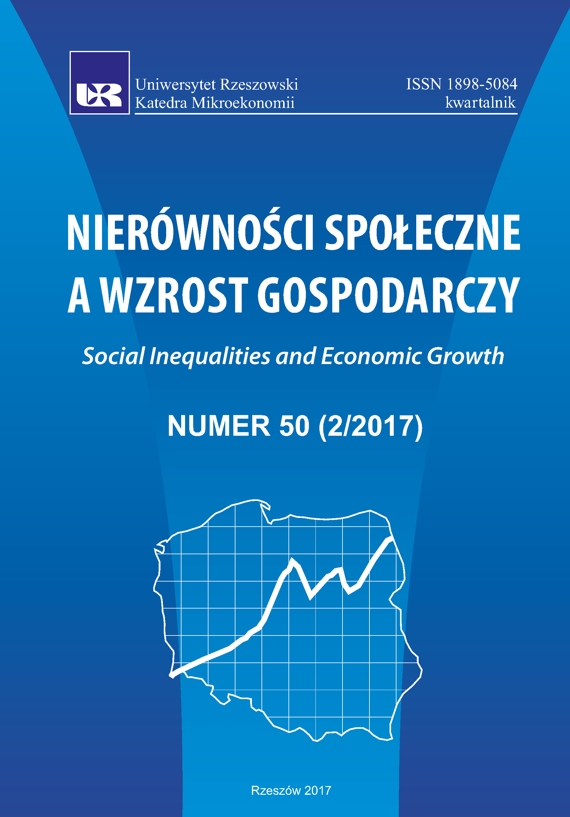Polityka fiskalna jako stabilizator koniunktury gospodarczej w Polsce w latach 2000–2014
DOI:
https://doi.org/10.15584/nsawg.2017.2.7Słowa kluczowe:
polityka fiskalna, wahania koniunkturalneAbstrakt
Stabilizacyjna funkcja polityki fiskalnej – zgodnie z którą wpływając na strukturę oraz poziom popytu globalnego, można oddziaływać na kształtowanie się realnych procesów gospodarczych – pozwala antycykliczną politykę fiskalną podzielić na politykę aktywną, związaną z działaniami dyskrecjonalnymi państwa, oraz politykę pasywną, związaną z działaniem automatycznych stabilizatorów koniunktury. Celem głównym artykułu jest próba empirycznego zbadania charakteru oddziaływania automatycznych i dyskrecjonalnych instrumentów antycyklicznej polityki fiskalnej oraz określenia ich znaczenia w kształtowaniu aktywności gospodarczej w Polsce w latach 2000–2014. W opracowaniu przyjęto hipotezę, iż zasadnicze znaczenie dla kształtowania wahań koniunkturalnych w Polsce mają: wśród automatycznych stabilizatorów koniunktury – podatki bezpośrednie, natomiast wśród instrumentów o charakterze dyskrecjonalnym – wydatki na działalność inwestycyjną państwa. Podstawą analizy empirycznej jest oszacowany model regresji liniowej, w którym jako zmienne objaśniane wykorzystano wskaźniki wahań cyklicznych (wyrażone w PKB), natomiast jako zmienne objaśniające – strumienie dochodów i wydatków budżetowych. W badaniu przyjęto kwartalne indeksy dynamiki zmiennych objaśnianych i objaśniających pochodzące z bazy danych GUS. Oczekiwane oddziaływanie antycykliczne wykazał zaledwie jeden instrument – dochody z tytułu podatku CIT, przeciwdziałając nadmiernym wahaniom tempa wzrostu PKB w okresie bieżącym, jak również z opóźnieniem dwóch kwartałów. Pozostałe instrumenty fiskalne, które okazały się istotne w wyjaśnianiu zmian koniunkturalnych, nasilały nadmierne wahania tempa wzrostu PKB, oddziałując na polską gospodarkę w sposób procykliczny.Downloads
Download data is not yet available.
Pobrania
Opublikowane
2020-11-13
Jak cytować
Spychała, J., & Spychała, M. (2020). Polityka fiskalna jako stabilizator koniunktury gospodarczej w Polsce w latach 2000–2014. Nierówności Społeczne a Wzrost Gospodarczy, 2(50), 120–130. https://doi.org/10.15584/nsawg.2017.2.7
Numer
Dział
Artykuły
Licencja
Prawa autorskie (c) 2017 Uniwersytet Rzeszowski

Utwór dostępny jest na licencji Creative Commons Uznanie autorstwa – Na tych samych warunkach 4.0 Miedzynarodowe.


